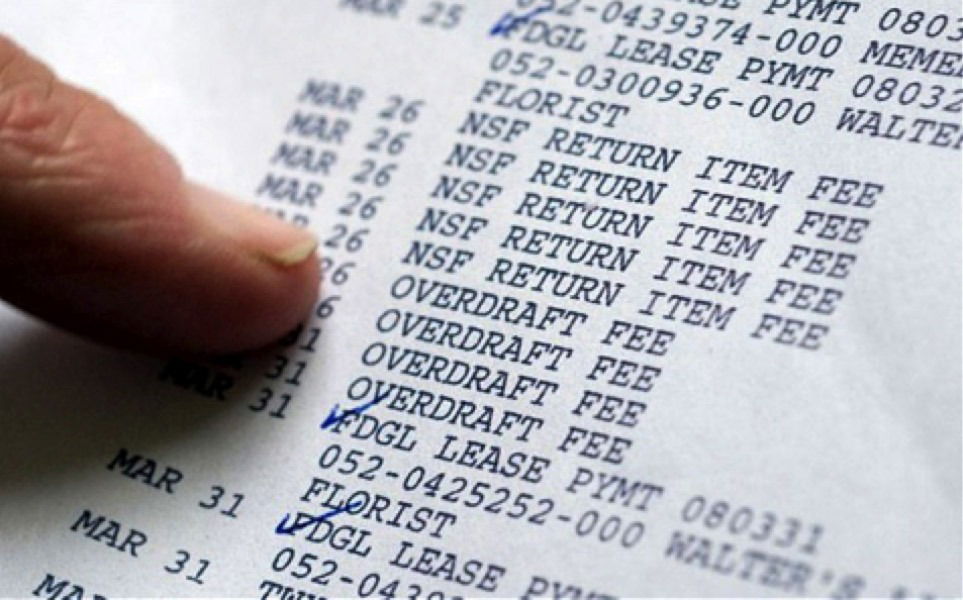Overdraft fees can sneak up on anyone. All it takes is one forgotten subscription or a delayed deposit, and suddenly your account balance dips below zero—and your bank hits you with a $30 charge (or more) for the trouble.

The good news is that many banks are willing to waive these fees—if you know how to ask. This guide breaks down the best ways to get overdraft fees refunded, tools that can help you avoid them in the future, and smarter banking options that don’t punish you for a simple mistake.
Key Takeaways
- You can often have overdraft fees waived by politely explaining your situation to your bank’s customer service, showing a positive account history, and being persistent if needed.
- Apps like Brigit, Chime, Trim, and Cushion can negotiate or help avoid overdraft fees through cash advances, alerts, and monitoring.
- Proactively preventing overdraft fees can be achieved by setting up alerts, managing multiple accounts for different expenses, considering overdraft protection, or switching to banks with more lenient fee structures.
Can you get overdraft fees waived?
Yes—many banks will waive an overdraft fee if you ask. A one-time mistake isn’t usually a dealbreaker, especially if you have a solid history of keeping your account in good standing.
Start by calling customer service or visiting a local branch. Explain what happened, highlight that you’ve already fixed the negative balance, and politely ask if they can remove the fee. If you’ve been a reliable customer, there’s a good chance they’ll say yes.
If the first rep says no, don’t stop there. Ask to speak with a supervisor or try calling back another day. Some banks limit how often they’ll waive fees—usually once every 12 months—but persistence and a positive tone often pay off.
How to Get Overdraft Fees Refunded: A Step-By-Step Guide
Getting your fees waived isn’t guaranteed—but if you approach the process the right way, your chances improve significantly. Here’s how to handle it from start to finish.
1. Know the Charges
Before contacting your bank’s customer service department, you want to know how much you were charged in overdraft fees. Review your bank statement or online account to identify each overdraft fee.
2. Prepare for the Phone Call
With the total amount of the fees in mind, get set to make your case with the customer service representative. Have your account information and the total charges available to save time. Be prepared to explain why you believe the overdraft fees should be refunded, including pointing out how quickly you rectified the negative balance.
3. Contact Your Bank
Next, reach out to your bank or credit union’s customer service department. Politely explain your situation, focusing on why the fees occurred and why you feel they should be refunded. Be kind and let the customer service representative know you appreciate their hard work.
4. Be Persistent
If the first person you speak with refuses to waive the fees, don’t give up. Ask to speak to a manager. If that doesn’t work, call again another day. Persistence can result in a successful overdraft fee refund.
Use an App That Helps to Refund Overdraft Fees
The digital age brings many tools to simplify personal finance management. Several mobile banking apps not only assist you in tracking your spending and balances, but can also negotiate overdraft fees with financial institutions on your behalf.
Other apps offer cash advances to help you avoid overdrafts on your bank account.
Here are a few personal finance apps to consider:
- Brigit: Brigit is a financial management app that offers interest-free cash advances to help you avoid overdraft fees. It also monitors your account and sends alerts if your balance is running low. If necessary, Brigit can provide a small advance to help you manage until your next paycheck.
- Chime: Although primarily a fintech that offers banking services, Chime offers SpotMe, a feature that allows you to make transactions that exceed your balance, up to a certain limit, without incurring hefty overdraft fees.
- Trim: Trim is a financial management app that analyzes your account for recurring charges. It can negotiate with banks or credit unions to lower or eliminate unwanted fees, including overdraft fees.
- Rocket Money: Rocket Money analyzes your account for recurring charges and can negotiate with service providers to lower bills or cancel unwanted subscriptions. While it doesn’t directly negotiate overdraft fees, its proactive monitoring can help prevent situations that might lead to such fees.
What to Do if You Can’t Get Your Overdraft Fees Covered
Even after your best efforts, the bank may not refund those fees. Here’s what you can do next:
1. Fix the Account as Quickly as Possible
If your account has a negative balance, deposit money as soon as you can to get back into the black. Leaving your account in the negative can lead to additional fees, like extended overdraft fees.
2. Sign Up for Alerts
Most banks and credit unions offer low balance alerts, which can help you prevent overdraft fees. These alerts notify you when your balance is getting low, so you can deposit more money before any transactions push you into the red.
3. Get Free Overdraft Protection
Consider setting up overdraft protection, which can link your checking account to a savings account, credit card, or line of credit. If you don’t have enough money in your checking account to cover a transaction, your bank or credit union can transfer funds from your linked account to cover the difference, often for a smaller fee than an overdraft fee.
4. Stay Up to Date on Your Balance
Regularly checking your account balances can prevent surprises. You can do this through your bank’s mobile banking app, online banking, or by calling customer service. Also, be mindful of automatic payments that might be scheduled to come out of your account.
5. Consider Switching Banks if You’re Still Struggling
If you’re constantly receiving overdraft fees and can’t get them waived, it may be time to switch banks. Some online banks offer accounts with no overdraft fees, while others might be more lenient when refunding overdraft fees.
How to Avoid Overdraft Fees in the Future
Preventing overdraft fees is easier than dealing with them after the fact. With a few simple habits and tools, you can stay in control of your account and avoid unnecessary charges altogether.
Track Your Balance
Maintaining an ongoing awareness of your available balance is the first line of defense in preventing overdraft fees. Make a daily habit of checking your account balances through your bank’s mobile app or online account. Consistent tracking can help you understand your spending habits better and ensure you’re never caught off guard by a lower-than-expected balance.
Turn Off Overdraft Protection
Overdraft protection is a feature offered by many financial institutions as a way to help you avoid non-sufficient funds fees. While it can be beneficial in some cases, it can also lead to a chain of overdraft fees if your linked accounts also run low on funds. If you find that overdraft protection is causing more harm than good due to associated fees, it might be worth turning it off.
Link Another Account
On the other hand, if you don’t have overdraft protection, consider turning it on. You can link your checking account to a backup account like a savings account or a secondary checking account. If your primary checking account ever lacks sufficient funds for a transaction, your bank can automatically pull funds from the linked account to cover the shortfall. This practice can provide an important safety net to prevent overdrafts, and the associated transfer fees are usually smaller than overdraft charges.
Set Up Alerts
Another effective way to avoid overdraft fees is by setting up low balance alerts. These alerts, typically customizable through your bank’s app or online interface, notify you when your account balance falls below a certain threshold. This early warning system gives you ample time to transfer or deposit the funds into your account before any transactions could potentially lead to an overdraft situation.
Switch Banks
If overdraft fees persist or if your bank’s policies aren’t aligned with your financial management style, don’t be afraid to shop around for other options. Several banks and credit unions do not charge overdraft fees, offering a more forgiving environment for occasional balance miscalculations.
In particular, online banks often have more customer-friendly fee structures because they save on the overhead costs associated with running physical branches. Making a switch could save you from future overdraft fees and potentially offer other financial benefits as well.
Here are some banks to consider that either reduce or eliminate overdraft fees:
1. SoFi
- Offer: Up to $300 sign-up bonus with direct deposit
- Opening Deposit: No minimum
- Interest Rate: Earn up to 3.60% APY
- ATMs: Over 55,000 fee-free ATMs
SoFi stands out for its high APY, no monthly fees, and no minimum opening deposit requirement, making it easy to get started.
2. Current
- Opening Deposit: No minimum
- Monthly Fee: No monthly fees
- ATMs: No ATM fees at over 40,000 ATMs
- Other Benefits: Get paid up to 2 days faster
Current is excellent for those looking to build credit and earn points with every transaction.
3. Chime®
- Opening Deposit: No minimum
- Monthly Fee: No monthly maintenance fees
- ATMs: Over 47,000 fee-free ATMs
- Other Benefits: Get paid up to 2 days early with direct deposit
Chime offers a user-friendly approach with no minimum deposit or monthly service fees and a large network of fee-free ATMs.
4. GO2bank
- Interest Rate: 4.50% APY on savings up to $5,000
- Opening Deposit: No minimum
- Other Benefits: Build credit with no annual fees, overdraft protection up to $200
GO2bank offers a high APY on savings and a no-minimum opening deposit, providing a flexible option for various financial needs.
Reap the Benefits of Multiple Checking Accounts
Using more than one checking account can help you avoid overdraft fees by keeping your money organized. Instead of letting everything mix in one place, you can separate your spending into buckets that match your financial priorities.
Set up one account for fixed expenses like rent, utilities, and loan payments. Use another for everyday spending—groceries, gas, dining out. This way, an unexpected charge from your debit card won’t accidentally put your bill money at risk.
With this setup, it’s easier to track where your money goes and avoid overspending. You’ll know exactly how much is safe to spend—and how much needs to stay put.
Conclusion
Overdraft fees can quickly eat into your bank account balance, but with the right strategies and habits, you can avoid these charges. Remember, it’s not just about managing your money today, but planning for a financially stable future.
With diligent account management, setting up alerts, and even switching banks if necessary, you can keep more money in your pocket and avoid the stress and cost of dealing with overdraft fees.
Frequently Asked Questions
How much do overdraft fees cost?
The cost of an overdraft fee can vary from one financial institution to another, but they typically range between $20 to $35 according to the Federal Deposit Insurance Corporation (FDIC).
Some banks may offer a lower fee for the first offense, while others may charge additional fees if the account remains in overdraft for an extended period. Be sure to check the fee structure of your bank or credit union to know what you could potentially be charged.
Can my credit score be affected by overdraft fees?
Overdraft fees themselves don’t directly affect your credit score. However, if your account remains negative for an extended period, the bank may send the account to collections, which can have a negative impact on your credit.
Are there any federal regulations on overdraft fees?
Yes, federal regulations require banks to obtain your consent before charging fees for overdrafts on ATM and one-time debit card transactions. However, these regulations don’t apply to checks or recurring payments.
How do I opt-in or opt-out of overdraft protection?
You can usually opt-in or opt-out of overdraft protection through your bank’s website, mobile app, or by contacting customer service.
What’s the difference between overdraft coverage and overdraft protection?
Overdraft coverage typically refers to the bank’s practice of covering transactions even when the account balance is insufficient, leading to overdraft fees. Overdraft protection is a service that links your checking account to another account to cover shortfalls, often for a smaller fee.




